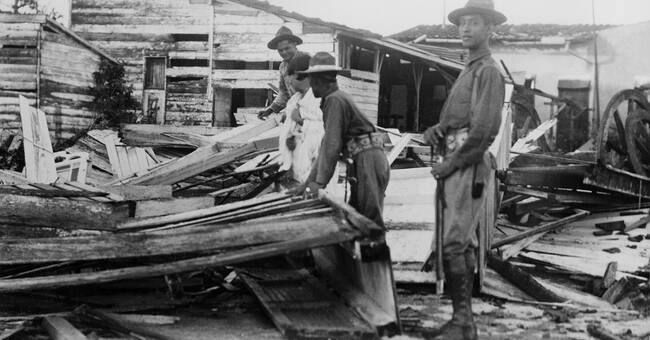I know I'm fighting headwinds, usually of hurricane force, as I try to reverse a linguistic trend that has been going on for many, many decades.
But I, and my colleagues here at Väderredaktionen, try as much as possible to at least teach our journalist colleagues in the house to use
tropical hurricanes
no matter where in the world the phenomenon occurs.
Precisely for the reason that it becomes clearly easier for everyone then to understand that it is the same phenomenon that is referred to by different foreign words in different parts of the world.
The Swedish meteorological collective word for the weather phenomenon is tropical low pressure,
tropical cyclone
in English.
Here, too, it is often seen that the English
cyclone is
translated directly into
cyclone
in Swedish, but why not use the Swedish term
low pressure
that exists?
The weather phenomenon is named differently depending on wind speed:
- Tropical low pressure: Below 18 m / s (
tropical depression
in English)
- Tropical storm: 18–32 m / s (
tropical storm
in English)
- Tropical hurricane: 33 m / s or more
Tropical storms and tropical hurricanes are given their own names according to predetermined lists of names developed by WMO, the World Meteorological Organization.
It is a good way to keep track of the different storms that are going on at the same time.
Tropical low pressures differ in formation and way of life from our "ordinary" Swedish low pressures that move in the so-called westerly wind belt.
Therefore, you should always clarify and include
tropical
at least once in a TV feature or a news text, and then preferably the first time.
Then you can use shortened and smoother
storm
or
hurricane
depending on wind strength.
"Whoever says typhoon should say hurricane"
When the wind speed reaches 33 m / s or they are called in English different in different parts of the world:
- North America:
hurricane
- Southeast Asia:
typhoon
(which is derived from the Chinese
tai fung
)
Most of the time,
tropical cyclone is used
, but in different parts of the world also expressions such as
severe tropical cyclone
and
very severe cyclonic storm
.
The unfortunate thing here is that different more or less ill-considered translations into Swedish are used for the same phenomenon.
It confuses the viewer / reader / visitor and should therefore be avoided.
In older Swedish literature, the word
taifun is
used for the Southeast Asian hurricanes, ie as a direct translation from the Chinese term
tai fung
.
When English-language news texts then began to flow in over us, the straightforward translation of the
typhoon
took over.
It's in my eyes extremely svengelskt, like as if we would say
tape
instead of
tape
as it is spelled
tape
in English.
So I strongly claim that anyone who says
typhoon
logically should also say
hurricane
, but you never hear that word!
Sludge crawler
Tropical hurricanes, in turn, are partly classified into subgroups,
hurricane
on a five-point scale after mean wind and
typhoon
in two classes after mean wind, and in Australia,
tropical cyclone is classified
on a five-point scale after village wind, which of course spins even more in translation. and the comparison mode.
There is also something else that adds to it in the translation from English to correct Swedish.
This mainly applies to the word
storm
in the English
tropical storm
.
As I have previously thought about, the English
storm
does not always mean
storm
in Swedish, but is a broader term that is often best translated as
storm
in Swedish.
The lower limit for wind strength in a
tropical storm
is, as I already mentioned, 18 m / s, which is not a storm strength at all, because it requires 25 m / s.
If the average wind in a
tropical storm is
18–24 m / s, it should reasonably be called
tropical storm
or
tropical low pressure
in Swedish.
However, this usually resolves itself in the mass media, because if it does not blow storm strength in a
tropical storm
, it is rarely of news value.
In some parts of the world, even the demarcation between
storm
and
hurricane is
not what we are used to.
Another thing that complicates is how the average wind is measured and calculated.
In North America, a 1-minute average value is used for the wind, while otherwise 10-minute values are used.
In Sweden, a 10-minute average wind is used.
Village winds are the maximum value of individual gusts of wind, but there you have to be careful not to compare average winds from one storm with village winds from another.
All these sludge crawlers make it a bit of a jungle to compare different tropical storms because classification, measurement and calculation methods and naming differ.
Even the words you choose in Swedish can be tricky, but I fight hard to get as simple and uniform a name as possible:
Tropical low pressure
is the collective name, where you then talk about
tropical
storm
or
tropical hurricane
depending on wind strength.
How difficult should it be?

